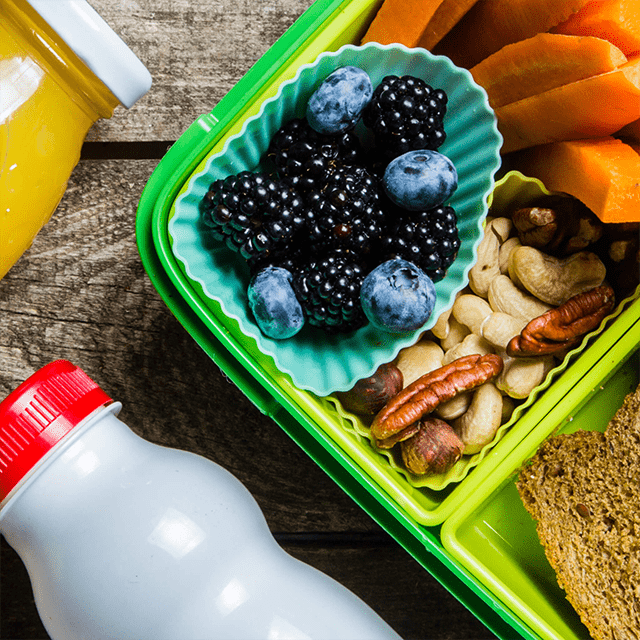Healthy eating habits are essential for everyone, including children!
In this blog, we will talk about the benefits of healthy eating for kids, highlighting how good nutrition impacts children’s physical, emotional, and mental health! We will also explore some practical steps parents can take to encourage healthy eating habits.
Let’s dig in! 🍴
According to the Centers for Disease Control and Prevention (CDC), healthy eating habits benefit children in many of the same ways they help adults. Teaching your child healthy eating habits at a young age can instill in them a lifelong habit of healthy eating.
Why healthy eating is important
Good nutrition plays a vital role in a child’s growth and development. Healthy eating gives children the essential nutrients for physical and cognitive development. A balanced diet helps strengthen bones, boosts immunity, maintains a healthy weight, and reduces the risk of chronic diseases later in life.
A balanced well-balanced diet consists of the following:
- Protein - chicken, eggs, beans, peas, beef or fish
- Fruits - fresh, frozen, canned, or dried
- Vegetables - fresh, frozen, or canned
- Grains - bread, rice, pasta, or oatmeal
- Dairy - milk, yogurt, or cheese
Food is fuel for kid’s bodies and brains
Remind your child that consuming healthy foods will allow them to grow big, strong and give them the power to play! One of our favorite ways to convey this truth to kids is to tell them that their bodies are energy machines. Explain that when they put good food in, their bodies are full of energy for play, sports, and everyday fun.
Emotional regulation
The connection between nutrition and emotional well-being is often overlooked. Research suggests that certain nutrients, such as omega-3 fatty acids, can positively impact a child’s mood and brain function. A diet rich in fruits, vegetables, whole grains, and protein provides essential nutrients for proper brain development - enhancing concentration, memory, and emotional stability.
Be a good example
Parents play a crucial role in shaping their child’s eating habits. Children are more likely to follow when parents prioritize healthy eating habits for themselves and the whole family. Avoid the availability of unhealthy snacks inside your home; this will benefit both yourself and your kids.
Here are some healthy snack ideas:
- Celery sticks with nut butter
- Apple with nut butter
- Unsweetened yogurt
- Low-sugar cereal
- Carrots and ranch
Eat healthy meals in front of your child, and be mindful about comments you make about certain foods in front of your kids. When you splurge and have a treat, don’t show any signs of guilt or remorse - your child is looking to you on how they should feel about food.
Make healthy eating fun
Introducing children to a world of healthy foods can be an exciting adventure! Engage your children by involving them in grocery shopping, allowing them to pick out new healthy foods to try. Experiment with new recipes and ingredients, and transform mealtime into interactive experiences.
Teach appropriate portion sizes
Teaching kids about appropriate portion sizes helps them develop a healthy relationship with food. Use visual cues, such as comparing portion sizes to everyday objects or using divided plates. Encouraging your child to take an appropriate amount of food for their first serving and go back for seconds (if they are still hungry) to help eliminate food waste and allow them to slow down their eating and listen to their bodies to determine if they are still hungry. Kids must recognize the difference between feeling hungry, satisfied, or overly full.
MyPlate offers a variety of fun resources to teach children about portion sizes and healthy eating.

Focus on moderation
It’s important to prioritize healthy eating, but teaching kids moderation is just as important. Avoid labeling foods as “good” or “bad” and instead focus on balance. Allowing occasional treats, such as cookies, ice cream, or other sweets, in controlled portions help children develop a healthy relationship with food and prevents feelings of deprivation or guilt.
The same goes for liquids. Encourage water as the primary source of hydration, keeping sugary drinks to a minimum.
Nurturing healthy eating habits in children is an investment in their overall well-being and sets them up for a healthy future. Parents can significantly impact their children’s lives by understanding the benefits of healthy eating and implementing practical steps to encourage good habits.
Healthy eating gives children the nutrients they need for optimal physical, emotional, and mental development.
Parents play a pivotal role in shaping their children’s eating habits. Parents can create a positive food environment by leading by example, making healthy eating fun, establishing routines, and teaching moderation. Involving children in meal planning and preparation empowers them and instills a love for nutritious food at a young age.
Keep in mind that healthy eating habits take time and patience. It’s important to celebrate small victories and be understanding when challenges arise.





